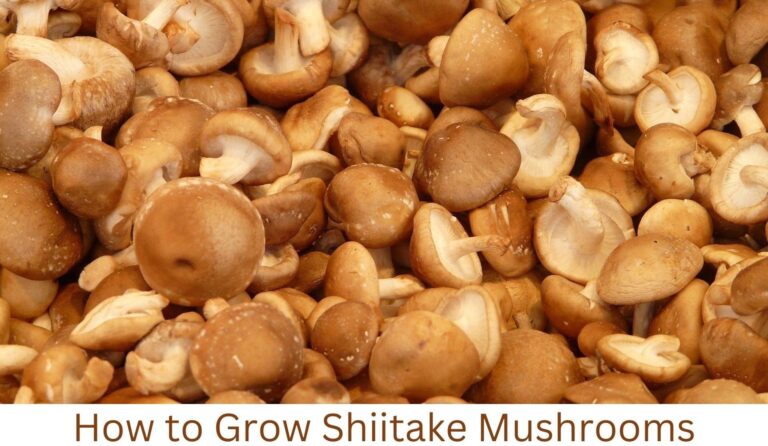Email: blogagri2@gmail.com
Top 10 Cash Crops for Small Farms:

How would you like to transform your backyard into an amazing source of income? If you are an experienced farmer wishing to make some changes and change the crops, or have embarked on your small scale farming, then cash crops suitable for smallholder and family farming can save the day. In today’s post, we will be looking at the top 10 cash crops for small farms and what makes each of them an attractive option for the farmers. From appealing vegetables to herbs, these commercially viable plants go beyond improving profits through their high demand in the market as they also promote the adoption of good agricultural practices. Let’s take our shovels and go out to discuss how we can make ourselves busy and successful in farming without leaving our pleasant homes.
Introduction: The Benefits of Growing Cash Crops on Small Farms
There is no denying that growing cash crops on small farms has its own rewards, one being that the farmer’s rakes in additional income while relishing the work associated with the land. It does not matter whether you have a big or small house. It does not matter whether you have gardening beds or not. There is always money making opportunities that is at your fingertips. Given the right strategy and understanding of their local context, smallholder farmers can grow crops that flourish in the area and are also sellable.
Do you have a pictorial accent with me? Once you are into the fields with rows of plants whipping waves of greens…know …each season has some windfall to offer you. Cash crops also present an excellent platform to engage in multiple areas of farming and build up recurrent income. What to grow and sell while minimizing competition with bigger players is the knowledge of the current ‘orders.’
So as we take a look at cash crops, it will dawn on you why some little seeds go a long way in making profits when properly managed in limited space. Now let us move on to find out the most preferable crops for cash cropping in small farms.
Understanding Your Market and Choosing the Right Crops
It is important to note that understanding the market is the most basic requirement when venturing into making any planned farming profit. Survey local market and asxe what products are on demand. Information from farmers’ markets, restaurants, and stores will also help understand what consumers want.
Try out the seasonal factors as well. Certain crops only mature during particular months whilst some may be perennial. Altering these crops however helps increase profits.
There is of course more market to be considered, such as the verticals. Sale of special or organically grown fruits and vegetables will mostly fetch more prices since there are consumers willing to spend more in order to get them.
Finally, reflect on your own preferences and skills. Our suggestion is to go for crops of interest to you since such enthusiasm will result in better maintenance and better end products. When you harmonize the personal preferences with the market demands, it makes both you and the probable clients happy.
Top 10 Cash Crops for Small Farms
Small family operated farms have to depend on cash crops for their survival. They offer a way in which income generation can be improved while making the best of the land available. It is important to know which types of plants do well in the area.
You may want to grow culinary herbs like basil or cilantro as well. These do not occupy much land space but have a high return on investment due to their demand in the local market.
Strawberries
Strawberries are yet another safe bet. With lots of care, they do well and are commercially sought after for their sweet taste.
And then comes garlic; an easy to grow and has a regular market. On top of that, markerable specific vegetables such as heirloom tomatoes can easily make its way into farmers’ markets.
If you are adventurous, try growing some mushrooms, gourmet mushroom strains prefer damp warm areas but certainly would require a dark room.
Every crop has its own advantages and disadvantages which need to be navigated before growing it. Knowing these unique aspects will be a step closer in enabling one maximize profitability from small scale family farming.
– Full of details about each crop with regard to topography, crop cultivation time, harvest time, and expected return on investment.
While choosing the cash crops, special attention has to be paid to the details. Here is the overview of some of the main fighters in the battle.
Tomatoes
Tomatoes need a warm climate and well-drained soils. The production period usually is from late summer to early autumn and the profit is $3000 profit per acre subject to proper management.
Basil is a sun-loving plant and is ready for sale within 60 days after it is planted. In peak seasons, the price of this commodity can go up to $20 per pound which is greatly beneficial to small-scale farmers.
If you are in the market for flowers, consider sunflowers. In about three months, these wonderful flowers will need your full attention with bright colors ready to be reaped. Their cost can also soar when the occasion demands it, for example, wedding events or festive seasons.
Pumpkins need a lot of blankets of best soil and a lot of space for them to grow huge for autumn sales. With a cap of over $2 per pumpkin as normal profit margin, they can be a merry seasonal item for sale in your farm.
Every single crop offers different prospects. Thus it is worth understanding the local market demands and basing the decisions on that.
Possible advantages and disadvantages of every crop to enable you to make an educated choice
It is important to understand the merits and demerits of cash crops considering these are in demand. Each crop has its own set of opportunities and threats.
As an illustration, tomatoes are favorite in the tropical areas since they can fetch good profits. But they come at a cost, dew supplies need to be constant even, and pests have to be dealt with.
Onions are quite durable and lasting in nature hence making them best for storage. However, their development requires careful management of soil.
Bamboo is relatively easy to grow and matures quickly but one has to wait for a while before they can break even because, unlike other woods, it requires time for harvest.
The market for advertisement for herbs like basil or cilantro grows in a limited area. They depend on yearly trends however.
Peppers are colorful products that entice most buyers, but they even pose threats as they have to be grown under specific temperatures.
After considering such factors, the decisions taken aim at maximising the set goal and does not leave any behind factors which would have created a risk.
Useful Tips for Making the Highest Possible Profit from Your Cash Crops
In order to gain the greatest returns from your cash crops, invest in proper rotation management of the crops. This practice not only helps to enhance the nutrient content but also extends the life of crops and even fighting off diseases. Advance planting will guarantee that there is enough food grown each season.
Employ correct techniques of land management. Intercrop the fertility and weed control measures with the use of cover crops, while the growth rates and water usage can be controlled with the drip irrigation systems.
Land management is inseparable from marketing. To expand your market possibilities, look for alternatives, for example, farmers’ markets or e-commerce. Establish contacts with local restaurants that offer fresh produce so that your market is guaranteed.
And do not forget about the necessity of being flexible. Market conditions are prone to changes, and one can lose out from such circumstances if instrumentation in innovation is lacking.
Proper crop rotation and land management techniques
This is mandatory to improve the soil around the objects. Soil comes back to its normal nutrient levels and pest problems spanning only a few crop cycles is characteristic of this method.
For instance, rye is planted over the winter followed by soy beans and clover during summer. Such biological harmony tallies with optimal yields and the least use of chemicals.
Land management techniques also steer the productivity of the farm. Cover cropping has been shown to improve the structure of the soil and retain moisture better. This is important since those plants can also be effective in preventing soil erosion by rain.
Furthermore, conservation tillage that is, reduced disturbances of the soil, also helps retain organic content. It directly improves the conditions of farmer which eventually increases productivity.
Be regular in checking the condition of your fields so as to notice problems promptly. A timely response to these issues facilitates problem and crop development during the growing season.
These strategies help build defence mechanisms for changes in weather and other common factors of the farming profession. Giving these activities a great weight not only will improve the output but will promote sustainability as well.
Marketing strategies for selling your crops
Marketing your crops is very important for being able to make a profit. Begin with identification of your consumers. It is wise to think about the local market: farm bounties, restaurants and grocery stores that are keen on fresh produce.
Building credible virtual platforms is also essential. At these social networking sites, tell the story of your farm and display beautiful images of products available for sale. People are likely to respond to these posts especially if the goods are grown locally.
Go for fairs and arenas to promote the same. Giving samples at the fairs or conducting tours of the farm develops an attachment with the potential consumers.
Try subscription services or Community Supported Agriculture (CSA). Through this, People are excited about receiving fresh and different crops during different seasons via a delivery service.
Working with other small farms can also increase advertising effectiveness through joint advertising campaigns. Returning is wise as there may be economies of scale from sharing these costs amongst the advertising cooperating firms which also build together the local agriculture promotion organization.
How to handle unforeseen challenges such as weather or pests
Anything can happen at any given moment, be it a blessing or a curse. Plans can be affected by the excessive heat, the excessive cold, pests or diseases. One should be prepared for such eventualities.
To begin with, New inventions are welcome. Define the region’s pest status and the forecasted weather for the current season and make some regular assessments. This will ensure that the threat is dealt with before it even occurs.
Furthermore, have a variety of crops. For instance, if only one crop is raised, then the farmer is faced with the risk of complete crop failure due to either insect infestation, or other adversities. However, if there is a variety of crops, then such risks are minimized.
Also, it is sure beneficial to purchase or use protective measures such as row covers or even natural pest deterrent. These devices are used to help protect from pests and excessive weather or environmental conditions.
Finally, develop linkages with actual farmers. Adequate feedback on problems and sharing of knowledge is critical when it comes to prevention of and coping with unforeseen physical occurrences.
Case Studies: Success Stories of Small Farms with Profitable Cash Crops
In California, heirloom tomatoes were embraced by the Johnsons. In addition to growing conventional tomatoes, however, they also grew upon Niches at local farmers’ markets; these were fairtlea and bountiful. The fact that their standards were so high earned them an enduring customer base each season and a good bottom line.
Simultaneously, a family in North Carolina converted an empty space in their house into an extraordinarily prolific mushroom-growing enterprise. With very little equipment and a lot of wits, they had harvested oyster mushrooms in demand by high-end restaurants.
Such storytelling has brought forth a spirited creativity and flexibility on the part of the farmers. Families holding on to small farmer can still make more than 400% in profits with the right kind of planning and making the right crop choices proving that farming is economically viable even on small pieces of land.
Alternative Revenue Streams for Small Farms: Diversifying Your Income Beyond Cash Crops
Creating and running a small farm that will be both sustainable and profitable in the long run will require the consideration of other sources of income as much as choosing the right cash crops. Although the use of cash crops is quite favorable for making good profits, it is risky to entirely depend on such crops since there are several unforeseen situations risks, which may come along.
Consider monetization of your other by-products, for example, jams, sauces, or pickles if you are growing fruits or vegetables. This approach does not only increase profits margin but also gives uniqueness to your farm against other market players.
Another alternative is the introduction of livestock. You may rear chicken for egg production or goats for milk which will be an additional source of income as well as useful organic matter for crops through trade of manure.
With community-supported agriculture (CSA) it is possible to sell to people who pay in advance shares of the harvest of the crops that you grow on your land. This system helps in the development of a loyal customer base, plus it gives the business some degree of cash flow which can be useful in settling seasonal expenses.
T







